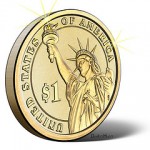
Transitioning to a Cash-Only Budget
When the budget gets tight, people often reduce expenditures such as expensive entertainment. There are many other ways to reduce overspending, but many households overlook these. Shopping around for cheaper medical coverage, or comparing online car insurance are two frequently overlooked ways to save. Another exceptionally helpful way is to transition towards paying cash only for items.
Credit and debit cards are popular because of convenience and the desire to have things now. However, fees and interest rates are a tremendous downside to cards for purchases and easily lead to burdensome debt. If you choose to handle your household budget wisely, consider cutting your card usage. Using cash instead of cards can save you a lot of money.
Tips for Making the Transition
When transitioning to using cash more frequently than cards, start by paying off any high interest cards if you are able and then get rid of them. You can keep one low interest credit card or a low fee debit card for emergencies.
Next, choose one area in which you will switch to using cash only. An easy place to start is with grocery shopping. Determine how much you spend, on average, grocery shopping weekly or monthly. Take only that amount in cash the next time you go grocery shopping.
Stores are set up with impulse buying in mind. There is a reason why candy and other small items are up by the register. Chances are, at some time you have added one of these items to your cart as you waited in line. If you only have a limited amount of cash with you, however, you shouldn’t be as tempted. Credit and debit cards make impulse buying easier, at the expense of our budget.
On the shopping trip following this initial cash-only test, do things a little differently. You will try to reduce the amount of money needed for groceries. List your meals and other food needs for the week – or the month, if you shop monthly – and then look for coupons and deals on those foods, before you go shopping. Use a calculator to determine how much cash you need to bring, considering also the coupons. This method keeps you from overspending and it can be used for shopping for anything, including clothes and household items.
For larger expenditures, such as new furniture, start setting aside money in a savings account. If you use a credit card for the purchase, you will end up paying interest on it  unless you pay the off balance each month. By instead collecting money in savings for the item, you are the one who gets paid interest. It is rare that buying a new sofa is an emergency – waiting to buy until you have the cash is always better.
unless you pay the off balance each month. By instead collecting money in savings for the item, you are the one who gets paid interest. It is rare that buying a new sofa is an emergency – waiting to buy until you have the cash is always better.
Transitioning to using cash takes a while to get used to, but you will be surprised at the savings, both from avoiding impulse purchases and avoiding all the fees and interest associated with using cards.
** Photo thanks to 401k & DonkeyHotey **
You must log in to post a comment.